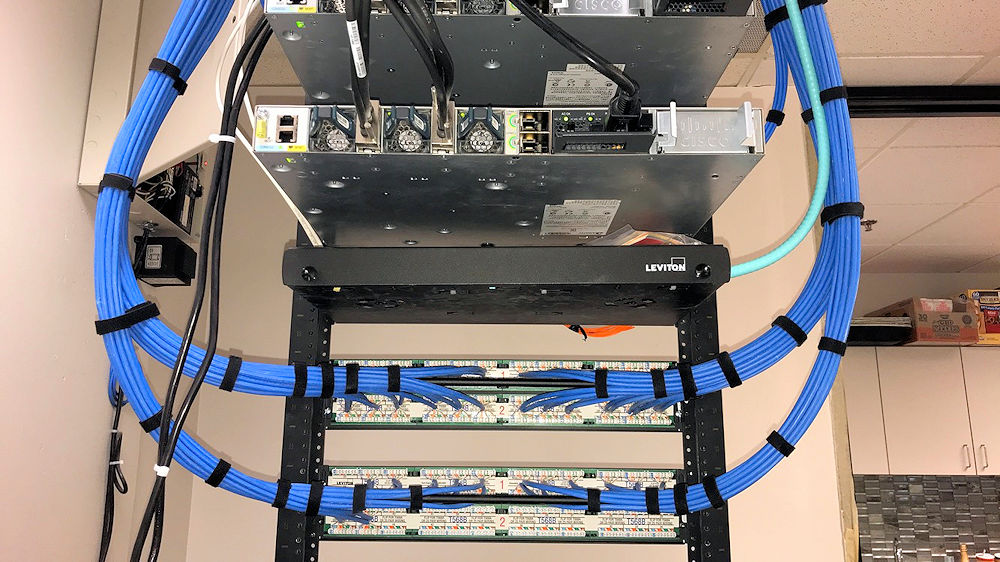The process of wiring and cabling are similar in some ways and different in others. The first thing to understand is that the two terms are not interchangeable. Wiring is a physical installation, while cabling (similar to structured cabling) is an electrical installation. In order for you to wire something, you have to physically connect it to another device or piece of equipment. Cables can be used to carry electricity or data from one place to another but they do not necessarily require a physical connection. For example, a telephone cable does not need to be connected to anything else because there is no other end to which it could be attached. A power cord also does not need to be attached to anything else because the plug at the end of the cord provides its own connection point.

The dictionary defines wiring as "the art of connecting wires together." This means that wiring involves connecting wires together with either solder or insulation tape. It is important to note that this definition only applies to the actual physical act of installing wires. When we talk about wiring, we mean the process of connecting devices together electrically. We will discuss how to install both types of wiring later on. Technicians perform the act of "wiring" whenever they run cables through walls, ceilings, floors, etc. They may use a variety of tools to accomplish this task including drills, hammers, screwdrivers, pliers, clippers, saws, and so forth. These tools are necessary to cut holes into surfaces and remove any existing material before running the wires through them.

Cabling (on the other hand) is defined as "a system of communications using insulated conductors." This means that cabling requires the use of connectors and terminations to create a complete circuit. Cabling usually consists of multiple cables bundled together and terminated at each end. As mentioned earlier, these bundles are called cords. Termination refers to the process of attaching a connector or plug to the end of a cable. In general, the term "cable" refers to the entire bundle of wires and connectors. This includes the cable itself and all of the components that make up the cable such as the sheath, jacket, and connectors. In addition, the term "cord" refers to the individual wires inside the cable. There may be many different kinds of cords within a single cable depending on the type of cable being installed. For instance, Ethernet cables come in several different varieties including twisted pair, coaxial, fiber optic, and shielded. Each kind of cable has its own specific set of connectors.

There are many similarities between the two processes. Both involve cutting holes in walls, ceilings, floors and removing old materials. However, there are also differences. Let's look at what those differences are. Wiring - Physical Installation When we say that wiring is a physical installation, we mean that the wires themselves must be physically connected to something. This could be a wall stud, a conduit box, a junction box, a switch, a light fixture, a receptacle, or even a person! The wires must then be connected to each other by soldering or insulating them with tape.

Cabling - Electrical Connection When we say that cabling is an electrical connection, we mean that the wire ends must be connected to a device that allows electricity to flow through it. In most cases, this device is called a termination. A termination can take various forms. Some common examples include RJ-45 plugs and jacks, SCSI connectors, USB connectors, and HDMI ports. This distinction is very important because it tells us whether the job is best left to a professional who specializes in wiring or should be done yourself. If you're not sure which one is right for your project, check out our article on how to choose a contractor.
In certain instances, technicians perform the task of "wiring" to accomplish their job while in other times, "cabling" may be called for. Here are some situations when you might want to consider doing one thing rather than another.
You'll need to install new wires if you plan on adding devices like lights, switches, outlets, or anything else that uses power. Installing new wires is a complex and time consuming process that requires specialized tools and knowledge. It's much easier to call a professional who will do the work for you.
If you don't have the money to pay someone else to do the work, you should probably hire a professional to do it instead. Even though you can save money by installing your own wires, it's still a good idea to leave the job up to professionals. They know exactly where to cut holes, they have all the necessary equipment, and they won't charge you extra fees for making mistakes.
As you can see, the differences between cabling and wiring are numerous. While both terms refer to the same basic concept, they are used differently in the industry. When choosing a technician to help you with your cabling projects, make sure that he or she is familiar with both types of installations. That way, you can get the results you want without any problems.